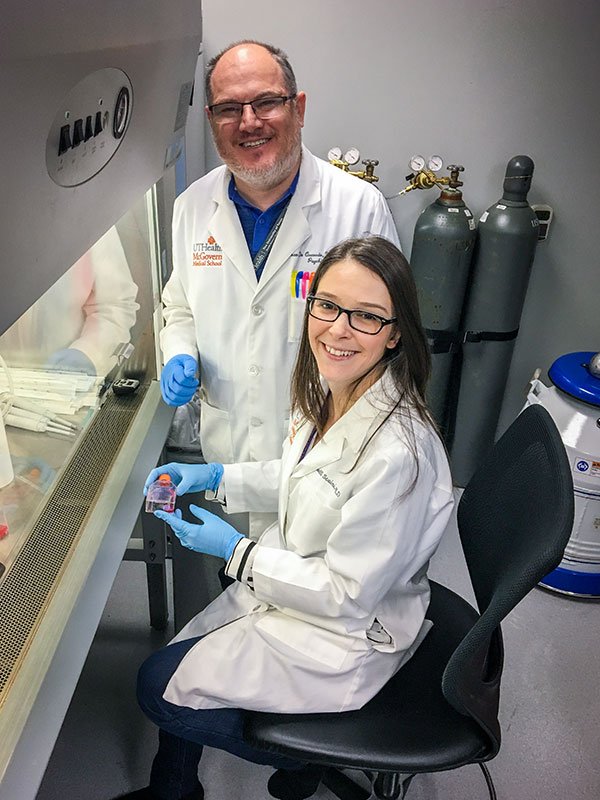Scientists discover changes in the brain’s cellular powerhouses of bipolar disorder patients

Studying the causes of bipolar disorder at UTHealth, from the left, are Giselli Scaini, PhD; and João de Quevedo, MD, PhD. PHOTO CREDIT Rob Cahill, UTHealth
HOUSTON – (Jan. 14, 2019) – Glitches in the structures that power cells could contribute to the mood swings experienced by the nearly 6 million American adults with bipolar disorder, report scientists from The University of Texas Health Science Center at Houston (UTHealth) in the journal Neuropsychopharmacology.
When researchers analyzed the blood of people with bipolar disorder, they identified problems with the tiny powerhouses in cells called mitochondria.
“Bipolar disorder is an incurable, mental health disorder and its pathology is poorly understood. A better understanding of the disorder is a prerequisite for new treatments,” said João de Quevedo, MD, PhD, senior author and professor of psychiatry and behavioral sciences at McGovern Medical School at UTHealth.
People with bipolar disorder alternate between depression and bursts of energy called mania. They are typically depressed a third of the time and euthymic (stable) or manic the rest of the time. People with bipolar disorder are more likely to abuse drugs or commit suicide than the general population.
In the study, researchers compared the mitochondria of 25 healthy subjects to 31 with bipolar disorder. They found a link between the severity of bipolar disorder and issues with the mitochondria. When the severity increased, the number of mitochondria problems rose as well.
“We learned that bipolar patients have smaller and dysfunctional mitochondria,” said Giselli Scaini, PhD, the study’s first author and a postdoctoral research fellow at McGovern Medical School. “We also found that manic episodes cause the most damage to the mitochondria.”
While conducting their study, the researchers identified factors contributing to the breakdown of the mitochondria. They believe this information could be used to help develop new treatments for this disorder.
“Damaged mitochondria need to be removed by the cell housekeeper system. When the system stops, things start breaking down,” Scaini said.
“These findings suggest that alterations in the mitochondrial network may play a role in producing psychiatric symptoms and the decline in functional status,” the authors wrote.
De Quevedo said, “The next step is to conduct a study in a larger cohort and to follow them over an extended period of time.”
UTHealth coauthors include Tatiana Barichello, PhD; Gabriel Fries, PhD; McGovern Medical School student Elizabeth Kennon; Bobby Nix, MD; Jair C. Soares, MD, PhD; and Giovana Zunta-Soares, MD. Kennon participated in the bench part of the study while enrolled in the Summer Research Program.
The study, titled “TSPO upregulation in bipolar disorder and concomitant downregulation of mitophagic proteins and NLRP3 inflammasome activation,” was supported by the John S. Dunn Foundation and the National Institute of Mental Health (R01MH085667-01 A1).
In the Department of Psychiatry and Behavioral Sciences at UTHealth, De Quevedo is the vice chair for faculty development & outreach, director of the Translational Psychiatry Program and the Director of the Treatment-Resistant Mood Disorders Program.
Barichello, de Quevedo and Soares are on the faculty of The University of Texas MD Anderson Cancer Center UTHealth Graduate School of Biomedical Sciences.
Written by: Rob Cahill
Media Hotline: 713-500-3030